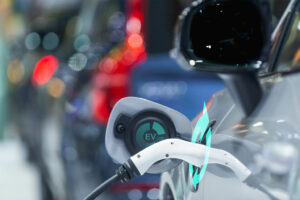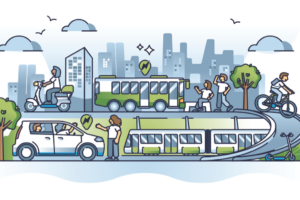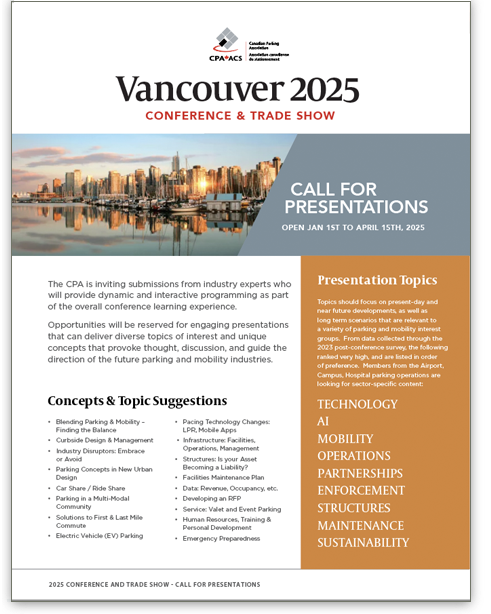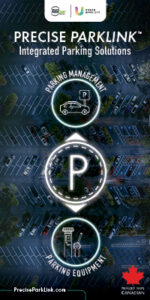By Chris Scheppmann
The proliferation of parking guidance technology has arguably been the most important parking technology trend over the past ten years. The past decade has seen guidance evolve from a valuable tool that many owners considered a luxury to an essential element of parking management. And with maturation of the smart city movement and the introduction of smart city platforms like the Park Detroit app, parking guidance has emerged as the indispensable parking and mobility technology.
Until recently, parking owners were faced with a significant cost/benefit tradeoff when selecting parking guidance technology. There were only two options: expensive single space sensor systems or inexpensive in-motion loop systems. For years, the single space sensor was the gold standard. They are very accurate, but also very expensive. A complete over-the-space sensor system could cost anywhere from $500 to $750 per space, given infrastructure limitations and signage requirements. So, for a garage with just five hundred parking spaces, the cost of installing a reliable guidance system would be around $250,000 and could run as high as $375,000. And that’s just the initial installation cost. There may also be maintenance and repair costs to factor in.
Traditional in-motion counting solutions, on the other hand, such as loops or ultrasonic sensor technologies are inexpensive. But they are also very inaccurate. These systems count vehicles as they enter and leave a parkade, using vehicle sensing technologies. While these systems are much less expensive than single space sensors, they are also considerably less accurate. They also typically operate as stand-alone systems and can’t be integrated with other platforms or software.
However, in recent years, the introduction of vision-based Intelligent Camera technology has filled the gap between single-space and traditional sensor systems for in-motion car counting. Intelligent camera technology leverages the latest advancements…
By Adamo Donatucci
Electric vehicles (EVs) are becoming increasingly popular in Canada as the country aims to achieve its 2050 zero-emissions goal, a target set to significantly reduce greenhouse gas emissions and combat climate change. Developing a robust EV charging infrastructure is no longer a future idea; it’s here. This makes now the ideal time for parking facility operators to prepare their facilities for this transition.
Understanding the EV Landscape in Canada
The electric vehicle market in Canada is experiencing rapid growth, driven by a combination of government incentives, charging preferences, and advancements in EV technology. Consumers today expect parking facilities to offer reliable and convenient charging options. With the growth of EVs, parking operators must stay ahead of these expectations by providing adequate charging infrastructure. This is not just about meeting current demand but also preparing for the future as more Canadians switch to electric vehicles. Understanding the regulatory environment is crucial, as compliance with local laws and standards will be necessary to successfully deploy EV infrastructure.
Assessing Current Infrastructure and Future Needs
Before installing EV infrastructure, parking facility operators need to conduct a comprehensive assessment of their existing facilities. This includes evaluating the current electrical capacity, layout, and potential areas where electric vehicle charging stations can be installed. It’s essential to consider both current usage patterns and potential future needs to ensure that the infrastructure will be adequate as the number of EVs grows.
Choosing the Right EV Charging Technology for Your Operation
Selecting the appropriate type of EV charging station is a critical decision for parking facility operators. There are several types of chargers, including Level 1, Level 2, and DC fast chargers, each suited for different scenarios. Choosing technology that integrates seamlessly with existing parking management systems is important to provide a smooth…
By Adamo Donatucci
In the parking and mobility industry, technology is pivotal in shaping its future. Across the globe, certain nations are at the forefront, strategically embracing advancements such as autonomous vehicles, micromobility solutions, intermodal applications, and shared zero-emission initiatives.
Below is a comprehensive exploration of various country policies, exploring the complex process of technological adaptation and their concerted efforts toward achieving ambitious zero-emission goals.
1. Autonomous Vehicles — A prominent force at the forefront of the automotive industry.
Undoubtedly, autonomous vehicles (AVs) have become a focal point in the mobility industry in recent years. According to a recent study by the global management consulting firm McKinsey & Company, passenger car advanced driver-assistance systems and autonomous-driving (AD) systems could generate $300 to $400 billion in revenue by 2035. Level 4 high-driving automation is anticipated to contribute $170 to $230 billion, accounting for approximately 57% of the dominant vehicle type in sales. Overall, the expectation is that 12% of new passenger cars sold by 2035 will incorporate Level 3 and 4 autonomous technologies, with 37% featuring advanced AD technologies.
For years, global car manufacturers, particularly in the United States and Europe, have promised a future of self-driving vehicles. However, recent trends suggest China is poised to lead the global shared AVs market. Research indicates that the top 5 regions in China collectively command 51.3% of the total autonomous mobility market. At the same time, the United States holds 47.5%, and Europe (including the United Kingdom, France, Spain, and Germany) accounts for 62.3%.
Government support is a crucial factor in fostering AV adaptation. Since 2020, over $48 billion has been invested in AVs, with the US leading in investments in 2020 ($7.3 billion) and 2021 ($11.3 billion). China surpassed the US by investing $4.7…
By Adamo Donatucci
The last mile of any journey is often the most fraught.
This phenomenon was first conceptualized by utilities and communications providers that were able to, for example, deliver their products to a neighbourhood easily but then experienced challenges connecting individual homes.
Likewise, logistics companies can easily coordinate delivering many goods to a central depot, but often experience difficulty finalizing the delivery to individual homes because a signature is required but the homeowner isn’t available. It’s also the most expensive and time-consuming part of the logistics lifecycle, so there’s a great deal of interest in finding more efficient solutions.
Similar matters occur in the realm of parking: getting to a concert venue downtown is easy enough but finding an affordable parking space nearby can be consuming.
As an increasing proportion of the world’s population lives in urban centres and those centres become increasingly dense, we can expect these dilemmas to worsen over time. To address these matters as they arise, companies are leveraging people’s interconnectedness with technology to develop solutions that are flexible and sustainable.
Last-Mile Parking Technology
Ninety-eight percent of parking transactions today leverage technology at some point in the transaction process. This includes anything from a driver visiting a pay-on-foot kiosk on their way back to their vehicle before leaving a parking garage, looking online to compare rates near their intended destination, to scanning a QR code posted near a parking meter to pay for a session without touching a machine.
In the context of the parking industry, last-mile technology includes everything that makes the driver’s life simpler and more convenient and lets them get to their destination more quickly and efficiently. In practical terms, this means reserved parking with ancillary services like electric vehicle (EV) charging and detailing, or apps that locate…









